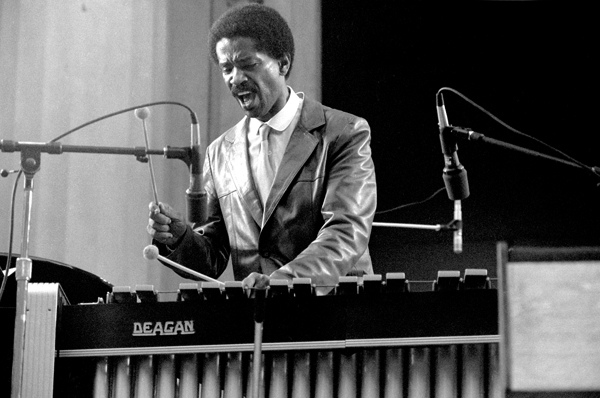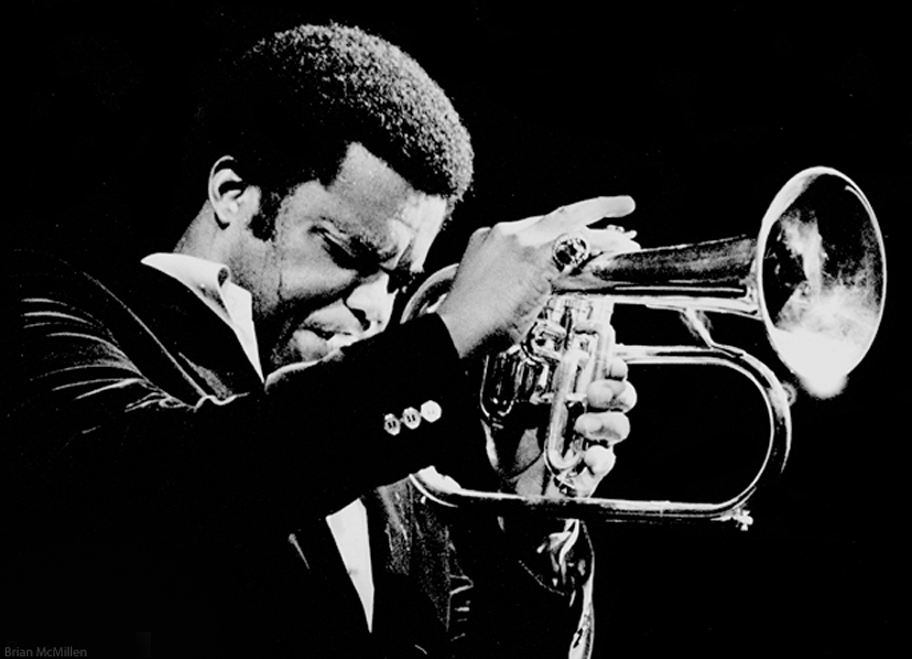|
Highway One (album)
''Highway One'' is an album by American jazz vibraphonist Bobby Hutcherson recorded in 1978 and released on the Columbia label.Bobby Hutcherson discography accessed January 28, 2011 The album was Hutcherson's first for Columbia after a long association with . Reception The review by awarded the album 3½ stars stating "With keyboardist |
Bobby Hutcherson
Robert Hutcherson (January 27, 1941 – August 15, 2016) was an American jazz vibraphone and marimba player. "Little B's Poem", from the 1966 Blue Note album '' Components'', is one of his best-known compositions.Huey, Steve. "Components – Bobby Hutcherson." ''AllMusic.'' Web. March 17, 2014. Hutcherson influenced younger vibraphonists including Steve Nelson, Joe Locke, and Stefon Harris.Hamlin, Jesse.Bobby Hutcherson Passionate about Music, Life" ''SFGate.'' Hearst Communications, Inc., January 15, 2012. Web. March 17, 2014.Musto, Russ. "Steve Nelson: Vibing." ''All About Jazz.'' August 1, 2006. Web. May 23, 2014.Henderson, Alex. "Joe Locke , Biography." ''AllMusic.'' Web. February 27, 2014.Ross, David. "Bobby Hutcherson: Master of the Vibes." ''KALW.'' March 27, 2012. Web. March 17, 2014. Biography Early life and career Bobby Hutcherson was born in Los Angeles, California, to Eli, a master mason, and Esther, a hairdresser. Hutcherson was exposed to jazz by his brother Te ... [...More Info...] [...Related Items...] OR: [Wikipedia] [Google] [Baidu] |
Eddie Marshall
Edwin "Eddie" Marshall (April 13, 1938 – September 7, 2011 ) was an American drummer. Biography Marshall was born in . He played in his father's swing group and in R&B bands while in high school. He moved to New York City in 1956, developing his percussion style under the influence of |
Columbia Records Albums
Columbia may refer to: * Columbia (personification), the historical female national personification of the United States, and a poetic name for America Places North America Natural features * Columbia Plateau, a geologic and geographic region in the U.S. Pacific Northwest * Columbia River, in Canada and the United States ** Columbia Bar, a sandbar in the estuary of the Columbia River ** Columbia Country, the region of British Columbia encompassing the northern portion of that river's upper reaches ***Columbia Valley, a region within the Columbia Country ** Columbia Lake, a lake at the head of the Columbia River *** Columbia Wetlands, a protected area near Columbia Lake ** Columbia Slough, along the Columbia watercourse near Portland, Oregon * Glacial Lake Columbia, a proglacial lake in Washington state * Columbia Icefield, in the Canadian Rockies * Columbia Island (District of Columbia), in the Potomac River * Columbia Island (New York), in Long Island Sound Populated places * ... [...More Info...] [...Related Items...] OR: [Wikipedia] [Google] [Baidu] |
Vocals
Singing is the act of creating musical sounds with the voice. A person who sings is called a singer, artist or vocalist (in jazz and/or popular music). Singers perform music (arias, recitatives, songs, etc.) that can be sung with or without accompaniment by musical instruments. Singing is often done in an ensemble of musicians, such as a choir. Singers may perform as soloists or accompanied by anything from a single instrument (as in art song or some jazz styles) up to a symphony orchestra or big band. Different singing styles include art music such as opera and Chinese opera, Indian music, Japanese music, and religious music styles such as gospel, traditional music styles, world music, jazz, blues, ghazal, and popular music styles such as pop, rock, and electronic dance music. Singing can be formal or informal, arranged, or improvised. It may be done as a form of religious devotion, as a hobby, as a source of pleasure, comfort, or ritual as part of music education or ... [...More Info...] [...Related Items...] OR: [Wikipedia] [Google] [Baidu] |
Jessica Cleaves
Jessica Marguerite Cleaves (December 10, 1948 – May 2, 2014) was an American singer and songwriter. Cleaves was a lead singer of the Friends of Distinction, Earth, Wind & Fire, Parliament Funkadelic and Raw Silk. Early life Jessica Cleaves was born to Mary Gladys Cleaves (née Wilkerson), a librarian, and Lane C. Cleaves II, a US Postal employee. Cleaves' paternal grandfather, Lane C. Cleaves Sr., was Presiding Bishop over Phillips Temple, CME. Cleaves attended the California Institute of The Arts School of Music and went on to attend The University of California, Los Angeles. One of her classmates was the famed songwriter Skip Scarborough. Career The Friends of Distinction was founded by Harry Elston and Floyd Butler, and beside Cleaves, it included Barbara Jean Love (plus Charlene Gibson, who replaced Love during her pregnancy). During 1971, Cleaves became a member of the band Earth, Wind & Fire. She went on to appear on EWF's 1972 LP '' Last Days and Time'' and 1973 album ' ... [...More Info...] [...Related Items...] OR: [Wikipedia] [Google] [Baidu] |
Percussion
A percussion instrument is a musical instrument that is sounded by being struck or scraped by a beater including attached or enclosed beaters or rattles struck, scraped or rubbed by hand or struck against another similar instrument. Excluding zoomusicological instruments and the human voice, the percussion family is believed to include the oldest musical instruments.''The Oxford Companion to Music'', 10th edition, p.775, In spite of being a very common term to designate instruments, and to relate them to their players, the percussionists, percussion is not a systematic classificatory category of instruments, as described by the scientific field of organology. It is shown below that percussion instruments may belong to the organological classes of ideophone, membranophone, aerophone and cordophone. The percussion section of an orchestra most commonly contains instruments such as the timpani, snare drum, bass drum, tambourine, belonging to the membranophones, and cy ... [...More Info...] [...Related Items...] OR: [Wikipedia] [Google] [Baidu] |
Flugelhorn
The flugelhorn (), also spelled fluegelhorn, flugel horn, or flügelhorn, is a brass instrument that resembles the trumpet and cornet but has a wider, more conical bore. Like trumpets and cornets, most flugelhorns are pitched in B, though some are in C. It is a type of valved bugle, developed in Germany in the early 19th century from a traditional English valveless bugle. The first version of a valved bugle was sold by Heinrich Stölzel in Berlin in 1828. The valved bugle provided Adolphe Sax (creator of the saxophone) with the inspiration for his B soprano (contralto) saxhorns, on which the modern-day flugelhorn is modeled. Etymology The German word ''Flügel'' means ''wing'' or ''flank'' in English. In early 18th century Germany, a ducal hunt leader known as a ''Flügelmeister'' blew the ''Flügelhorn'', a large semicircular brass or silver valveless horn, to direct the wings of the hunt. Military use dates from the Seven Years' War, where this instrument was employed as a pre ... [...More Info...] [...Related Items...] OR: [Wikipedia] [Google] [Baidu] |
Freddie Hubbard
Frederick Dewayne Hubbard (April 7, 1938 – December 29, 2008) was an American jazz trumpeter. He played bebop, hard bop, and post-bop styles from the early 1960s onwards. His unmistakable and influential tone contributed to new perspectives for modern jazz and bebop. Career beginnings Hubbard started playing the mellophone and trumpet in his school band at Arsenal Technical High School in Indianapolis, Indiana. Trumpeter Lee Katzman, former sideman with Stan Kenton, recommended that he begin studying at the Arthur Jordan Conservatory of Music (now the Jordan College of the Arts at Butler University) with Max Woodbury, the principal trumpeter of the Indianapolis Symphony Orchestra. In his teens, Hubbard worked locally with brothers Wes and Monk Montgomery, and worked with bassist Larry Ridley and saxophonist James Spaulding. In 1958, at the age of 20, he moved to New York and began playing with some of the best jazz players of the era, including Philly Joe Jones, Sonny Rollin ... [...More Info...] [...Related Items...] OR: [Wikipedia] [Google] [Baidu] |
Flute
The flute is a family of classical music instrument in the woodwind group. Like all woodwinds, flutes are aerophones, meaning they make sound by vibrating a column of air. However, unlike woodwind instruments with reeds, a flute is a reedless wind instrument that produces its sound from the flow of air across an opening. According to the instrument classification of Hornbostel–Sachs, flutes are categorized as edge-blown aerophones. A musician who plays the flute is called a flautist or flutist. Flutes are the earliest known identifiable musical instruments, as paleolithic examples with hand-bored holes have been found. A number of flutes dating to about 53,000 to 45,000 years ago have been found in the Swabian Jura region of present-day Germany. These flutes demonstrate that a developed musical tradition existed from the earliest period of modern human presence in Europe.. Citation on p. 248. * While the oldest flutes currently known were found in Europe, Asia, too, has ... [...More Info...] [...Related Items...] OR: [Wikipedia] [Google] [Baidu] |
Hubert Laws
Hubert Laws (born November 10, 1939) is an American flutist and saxophonist with a career spanning over 40 years in jazz, classical, and other music genres. Laws is one of the few classical artists who has also mastered jazz, pop, and rhythm-and-blues genres, moving effortlessly from one repertory to another. Biography Hubert Laws, Jr. was born November 10, 1939, in the Studewood section of Houston, Texas, the second of eight children to Hubert Laws, Sr. and Miola Luverta Donahue. Many of his siblings also entered the music industry, including saxophonist Ronnie and vocalists Eloise, Debra, and Johnnie Laws. He began playing flute in high school after volunteering to substitute for the school orchestra's regular flutist. He became adept at jazz improvisation by playing in the Houston-area jazz group the Swingsters, which eventually evolved into the Modern Jazz Sextet, the Night Hawks, and The Crusaders. At the age of 15, he was a member of the early Jazz Crusaders while in T ... [...More Info...] [...Related Items...] OR: [Wikipedia] [Google] [Baidu] |
Electric Piano
An electric piano is a musical instrument which produces sounds when a performer presses the keys of a piano-style musical keyboard. Pressing keys causes mechanical hammers to strike metal strings, metal reeds or wire tines, leading to vibrations which are converted into electrical signals by magnetic pickups, which are then connected to an instrument amplifier and loudspeaker to make a sound loud enough for the performer and audience to hear. Unlike a synthesizer, the electric piano is not an electronic instrument. Instead, it is an electro-mechanical instrument. Some early electric pianos used lengths of wire to produce the tone, like a traditional piano. Smaller electric pianos used short slivers of steel to produce the tone (a lamellophone with a keyboard & pickups). The earliest electric pianos were invented in the late 1920s; the 1929 ''Neo- Bechstein'' electric grand piano was among the first. Probably the earliest stringless model was Lloyd Loar's Vivi-Tone Clavier. A few ... [...More Info...] [...Related Items...] OR: [Wikipedia] [Google] [Baidu] |
Piano
The piano is a stringed keyboard instrument in which the strings are struck by wooden hammers that are coated with a softer material (modern hammers are covered with dense wool felt; some early pianos used leather). It is played using a keyboard, which is a row of keys (small levers) that the performer presses down or strikes with the fingers and thumbs of both hands to cause the hammers to strike the strings. It was invented in Italy by Bartolomeo Cristofori around the year 1700. Description The word "piano" is a shortened form of ''pianoforte'', the Italian term for the early 1700s versions of the instrument, which in turn derives from ''clavicembalo col piano e forte'' (key cimbalom with quiet and loud)Pollens (1995, 238) and ''fortepiano''. The Italian musical terms ''piano'' and ''forte'' indicate "soft" and "loud" respectively, in this context referring to the variations in volume (i.e., loudness) produced in response to a pianist's touch or pressure on the keys: the grea ... [...More Info...] [...Related Items...] OR: [Wikipedia] [Google] [Baidu] |

.jpg)


